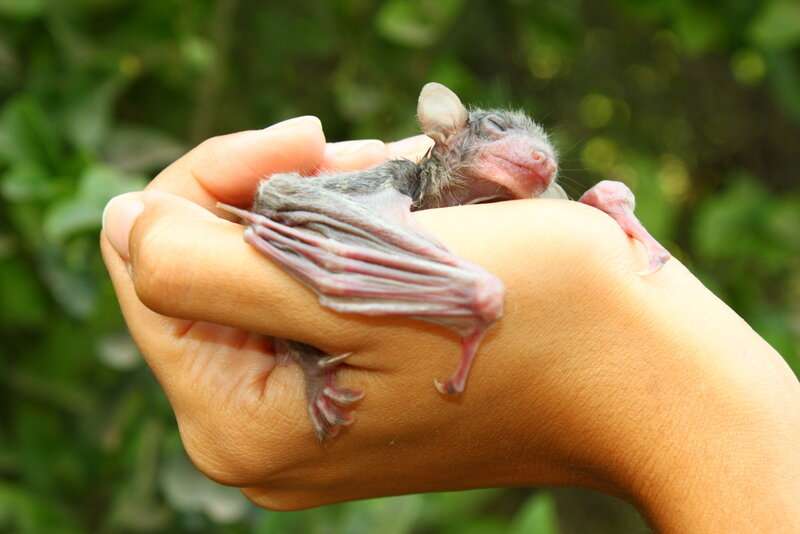October 28, 2021 report
Egyptian fruit bat pups steer echolocation beams from day zero

Bob Yirka
news contributor

A trio of researchers with Tel Aviv University's School of Zoology has found that newly born Egyptian fruit bats are capable of steering echolocation beams. In their paper published in the journal Proceedings of the Royal Society B, Grace Smarsh, Yifat Tarnovsky and Yossi Yovel note also that just after birth, the pups are also able to hear the echolocation clicks produced by adults and can produce clicks of their own.
Prior research has shown that Egyptian fruit bats uniquely produce echolocation clicks using their tongues—most other species use their noses or mouths. They also emit clicks at a faster rate than other bats, allowing them to send out a constant stream of sounds. The bats have also been found to steer the click beams in desired directions to help them sense the environment around them. In this new effort, the researchers wondered about the stages of development of echolocation in the bats.
To learn more, the researchers obtained several of the bats and allowed them to reproduce in their lab. As the pups were born, the researchers began studying their initial echolocation anatomy and how it was used and then followed up periodically to see how it progressed. They also took recordings of their brainstems to learn more about how clicks were produced and how they were processed when they bounced back.
The researchers found that the pups could emit isolation calls using extremely short clicks in response to clicks and other sounds they heard. The researchers note this demonstrates early auditory abilities. They also found that the pups were sensitive to the pure types of tones that have been found to be sensitive in adults, and they found that the pups could produce clicks in patterns that mimicked the adults around them.
Most impressively, they were able to use their tongues to steer sonar beams. The researchers also found that as the pups grew older, they began to produce faster click-pairs until eventually matching the abilities of adults. And finally, they found that the maturation of the echolocation physiology remained relatively stable until they reached 35 days old—at that point, the frequency and duration of clicks changed to match that of adults. The researchers noted this coincided with the onset of flight.
Written for you by our author —this article is the result of careful human work. We rely on readers like you to keep independent science journalism alive. If this reporting matters to you, please consider a (especially monthly). You'll get an ad-free account as a thank-you.
More information: Grace C. Smarsh et al, Hearing, echolocation, and beam steering from day 0 in tongue-clicking bats, Proceedings of the Royal Society B: Biological Sciences (2021).
Journal information: Proceedings of the Royal Society B
© 2021 Science X Network



















